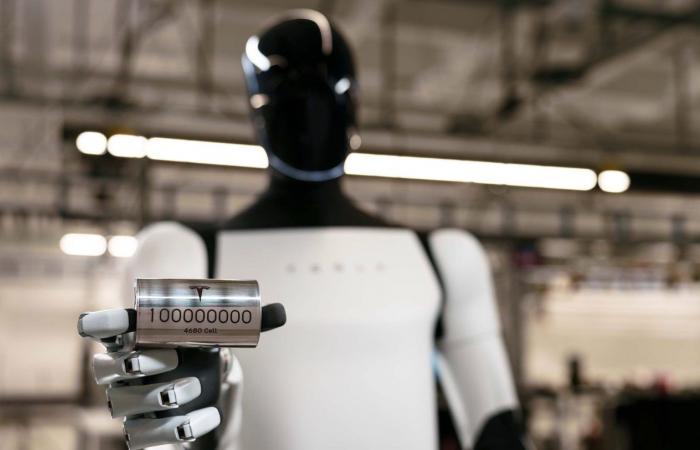Electric car news
Tesla, the electric pioneer, has just taken a crucial step in its quest for innovation and market domination. Elon Musk’s company has announced that it has produced its 100 millionth 4680 battery, an accomplishment that could revolutionize the entire automotive industry. Let’s dive into the details of this technological feat and its implications for the future of the electric car.
The 4680 battery: a major innovation finally mastered?
Presented with great fanfare during Tesla Battery Day in September 2020, the 4680 cell promised wonders. With its dimensions of 46 mm in diameter and 80 mm in height, this new battery was to offer higher energy density and reduced manufacturing costs. The ultimate goal? Making it possible to produce a powerful, long-range electric car at 25 000 eurosa Holy Grail long fantasized about by the industry.
However, the path to mass production proved to be fraught with pitfalls. Tesla had to overcome many technical challenges, particularly linked to the “dry coating” process inherited from the acquisition of Maxwell Technologies in 2019. This technology, supposed to simplify manufacturing, turned out to be a real industrial headache. So much so that last May, rumors reported an ultimatum given by Elon Musk to his teams: resolve the problems before the end of the year or abandon the project.
A dazzling acceleration in production
The figures speak for themselves and demonstrate exponential progression:
- January 2022: 1 million 4680 cells produced
- June 2023: 10 million cells
- June 2024: 50 million cells
- September 2024: 100 million cells
This dramatic acceleration suggests that Tesla has finally overcome major obstacles to mass production. Today, the company manufactures on average 495,000 cells per dayor almost half a million! To put these figures into perspective, it took 29 months to produce the first 50 million cells, compared to only 3 months for the next 50 million.

Implications for the Tesla lineup and the automotive industry
With this increase in power, Tesla now has sufficient production capacity to equip approximately 60 000 Cybertrucks. It is no coincidence that the futuristic pickup truck was chosen as the test vehicle for the first 4680 dry cathode cells, the validation phase of which began last July.
Beyond the Cybertruck, control of the production of 4680 cells could have repercussions on the entire Tesla range. The company has always claimed that this technology was the key to drastically reducing its production costs. In a context of increased competition and pressure on margins, this progress comes at the right time.
| Model | Estimated capacity (4680 cells) | Potential range (km) |
|---|---|---|
| Cybertruck | ~1340 cells | 800+ |
| Model Y Performance | ~960 cells | 530 |
| Roadster 2.0 (estimation) | ~1500 cells | 1000+ |
The challenges ahead for Tesla and the 4680 battery
Despite these significant advances, Tesla is not yet out of the woods. Mass production is only part of the equation. The initial promises of the 4680 cell also included improvements in terms of energy densityof longevity and above all cost reduction. These aspects remain to be confirmed on a large scale.
Additionally, the competitive landscape has evolved since the initial announcement of the 4680. Other battery manufacturers have announced plans to produce cells in this format, and some Tesla competitors have lowered their production targets. electric vehicles, thus freeing up production capacity at traditional battery suppliers.
Is the future of electric mobility emerging at Tesla?
The announcement of the production of the 100 millionth copy of the 4680 battery undoubtedly marks a turning point in the history of Tesla and potentially the entire automotive industry. If the company can deliver on its performance and cost promises, we could see a new revolution in electric vehicles.
Imagine electric cars capable of traveling more than 800 km with a single charge, recharging in record time and accessible to more people thanks to lower prices. This is the promise that Tesla’s 4680 battery carries.
As you will have understood, the stakes are high for Tesla as for the entire sector. The next few months will be crucial to determine whether the 4680 cell will keep all its promises and whether it will allow Tesla to maintain its technological lead in an increasingly competitive market. One thing is certain: the race for the battery of the future is far from over, and Tesla has just taken a head start.
Written by Philippe Moureau
Forty-year-old passionate about electric cars. I am interested in the energy transition and the fight against greenhouse gas emissions. I am a true electric car enthusiast and environmental advocate.
React to the article








